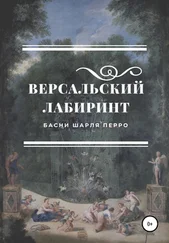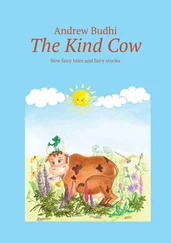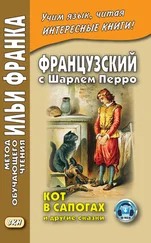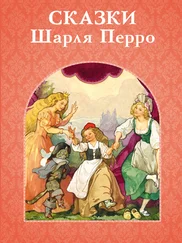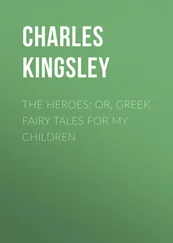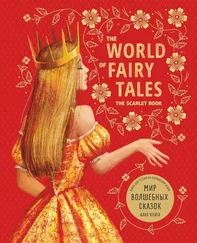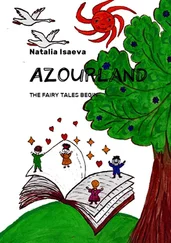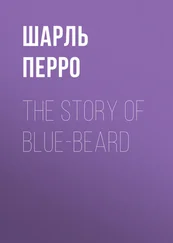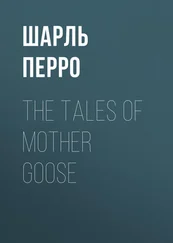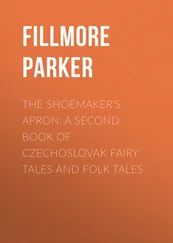Шарль Перро - The Fairy Tales of Charles Perrault
Здесь есть возможность читать онлайн «Шарль Перро - The Fairy Tales of Charles Perrault» — ознакомительный отрывок электронной книги совершенно бесплатно, а после прочтения отрывка купить полную версию. В некоторых случаях можно слушать аудио, скачать через торрент в формате fb2 и присутствует краткое содержание. Жанр: foreign_antique, foreign_prose, Сказка, на английском языке. Описание произведения, (предисловие) а так же отзывы посетителей доступны на портале библиотеки ЛибКат.
- Название:The Fairy Tales of Charles Perrault
- Автор:
- Жанр:
- Год:неизвестен
- ISBN:нет данных
- Рейтинг книги:3 / 5. Голосов: 1
-
Избранное:Добавить в избранное
- Отзывы:
-
Ваша оценка:
- 60
- 1
- 2
- 3
- 4
- 5
The Fairy Tales of Charles Perrault: краткое содержание, описание и аннотация
Предлагаем к чтению аннотацию, описание, краткое содержание или предисловие (зависит от того, что написал сам автор книги «The Fairy Tales of Charles Perrault»). Если вы не нашли необходимую информацию о книге — напишите в комментариях, мы постараемся отыскать её.
The Fairy Tales of Charles Perrault — читать онлайн ознакомительный отрывок
Ниже представлен текст книги, разбитый по страницам. Система сохранения места последней прочитанной страницы, позволяет с удобством читать онлайн бесплатно книгу «The Fairy Tales of Charles Perrault», без необходимости каждый раз заново искать на чём Вы остановились. Поставьте закладку, и сможете в любой момент перейти на страницу, на которой закончили чтение.
Интервал:
Закладка:
Before he went, he succeeded in frustrating a project for closing the Tuileries Gardens against the people of Paris and their children. Colbert proposed to reserve them to the royal use, but Perrault persuaded him to come there one day for a walk, showed him the citizens taking the air and playing with their children; got the gardeners to testify that these privileges were never abused, and carried his point by declaring, finally, that "the King's pleasaunce was so spacious that there was room for all his children to walk there."
Sainte-Beuve, seventy years ago, pleaded that this service to the children of Paris should be commemorated by a statue of Perrault in the centre of the Tuileries. The statue has never been erected; and, to the present day, Paris, so plentifully provided with statues and pictures of the great men of France, has neither the one nor the other to show that she appreciates the genius of Perrault. Indeed, there is no statue of him in existence; and the only painting of him with which I am acquainted is a doubtful one hung far away in an obscure corner of the palace of Versailles.
The close of Perrault's official career marked the beginning of his period of greatest literary activity. In 1686 he published his long narrative poem "Saint Paulin Evesque de Nole" with "a Christian Epistle upon Penitence" and "an Ode to the Newly-converted," which he dedicated to Bossuet. Between the years 1688 and 1696 appeared the "Parallèle des Anciens et des Modernes" to which I have already referred. In 1693 he brought out his "Cabinet des Beaux Arts," beautifully illustrated by engravings, and containing a poem on painting which even Boileau condescended to admire. In 1694 he published his "Apologie des Femmes." He wrote two comedies – "L'Oublieux" in 1691, and "Les Fontanges." These were not printed till 1868. They added nothing to his reputation. Between 1691 and 1697 were composed the immortal "Histoires ou Contes du Temps Passé" and the "Contes en Vers." Toward the end of his life he busied himself with the "Éloges des Hommes Illustres du Siècle de Louis XIV." The first of these two stately volumes came out in 1696 and the second in 1700. They were illustrated by a hundred and two excellent engravings, including one, by Edelinck, of Perrault himself and another of his brother Claude. These biographies are written with kindly justice, and form a valuable contribution to the history of the reign of the Roi Soleil. I have not exhausted the list of Perrault's writings, but, to speak frankly, the rest are not worth mentioning.
He died, aged seventy-five, in 1703, deservedly admired and regretted by all who knew him. This was not strange. For he was clever, honest, courteous, and witty. He did his duty to his family, his employer, his friends, and to the public at large. In an age of great men, but also of great prejudices, he fought his own way to fame and fortune. He served all the arts, and practised most of them. Painters, writers, sculptors, musicians, and men of science all gladly made him free of their company. As a good Civil Servant he was no politician, and he showed no leaning whatever toward what was regarded in his time as the greatest of all professions – that of arms. These two deficiencies, if deficiencies they be, only endear him the more to us. Every one likes a man who deserves to enjoy life and does, in fact, enjoy it. Perrault was such a man. He was more. He was the cause of enjoyment to countless of his fellows, and his stories still promise enjoyment to countless others to come.
It is amazing to remember that Perrault was rather ashamed of his "Histoires ou Contes du Temps Passé" – perhaps better known as "Les Contes de ma Mère l'Oye," or "Mother Goose's Tales," from the rough print which was inserted as a frontispiece to the first collected edition in 1697. He would not even publish them in his own name. They were declared to be by P. Darmancour, Perrault's young son. In order that the secret might be well kept, Perrault abandoned his usual publisher, Coignard, and went to Barbin. The stories had previously appeared from time to time, anonymously, in Moetjens' little magazine the "Recueil," which was published from The Hague. "La Belle au Bois Dormant" ("Sleeping Beauty") was the first: and in rapid succession followed "Le Petit Chaperon Rouge" ("Red Riding-Hood"), "Le Maistre Chat, ou le Chat Botté" ("Puss in Boots"), "Les Fées" ("The Fairy"), "Cendrillon, ou la Petite Pantoufle de Verre" ("Cinderella"), "Riquet à la Houppe" ("Riquet of the Tuft"), and "Le Petit Poucet" ("Tom Thumb").
Perrault was not so shy in admitting the authorship of his three verse stories – "Griselidis," "Les Souhaits Ridicules," and "Peau d'Asne." The first appeared, anonymously it is true, in 1961; but, when it came to be reprinted with "Les Souhaits Ridicules" and "Peau d'Asne" in 1695, they were entrusted to the firm of Coignard and described as being by "Mr Perrault, de l'Academie Françoise." La Fontaine had made a fashion of this sort of exercise.
It would not be fair to assume that P. Darmancour had no connection whatever with the composition of the stories which bore his name. The best of Perrault's critics, Paul de St Victor and Andrew Lang among others, see in the book a marvellous collaboration of crabbed age and youth. The boy, probably, gathered the stories from his nurse and brought them to his father, who touched them up, and toned them down, and wrote them out. Paul Lacroix, in his fine edition of 1886, goes as far as to attribute the entire authorship of the prose tales to Perrault's son. He deferred, however, to universal usage when he entitled his volume "Les Contes en prose de Charles Perrault."
"Les Contes du Temps Passé" had an immediate success. Imitators sprung up at once by the dozen, and still persist; but none of them has ever rivalled, much less surpassed, the inimitable originals. Every few years a new and sumptuous edition appears in France. The best are probably those by Paul Lacroix and André le Fèvre.
The stories soon crossed the Channel; and a translation "by Mr Samber, printed for J. Pote" was advertised in the "Monthly Chronicle" of 1729. "Mr Samber" was presumably one Robert Samber of New Inn, who translated other tales from the French, for Edmond Curl the bookseller, about this time. No copy of the first edition of his Perrault is known to exist. Yet it won a wide popularity, as is shown by the fact that there was a seventh edition published in 1795, for J. Rivington, a bookseller, of Pearl Street, New York.
No English translation of Perrault's fairy tales has attained unquestioned literary pre-eminence. So the publishers of the present book have thought it best to use Samber's translation, which has a special interest of its own in being almost contemporary with the original. The text has been thoroughly revised and corrected by Mr J. E. Mansion, who has purged it of many errors without detracting from its old-fashioned quality. To Mr Mansion also is due the credit for the translation of the "Les Souhaits Ridicules" and for the adaptation of "Peau d'Asne." "Griselidis" is excluded from this book for two good reasons; firstly, because it is an admitted borrowing by Perrault from Boccaccio; secondly, because it is not a 'fairy' tale in the true sense of the word.
It is, perhaps, unnecessary for me to add anything about Mr Clarke's illustrations. Many of the readers of this book will be already familiar with his work. Besides, I always feel that it is an impertinence to describe pictures in their presence. Mr Clarke's speak for themselves. They speak for Perrault too. It is seldom, indeed, that an illustrator enters so thoroughly into the spirit of his text. The grace, delicacy, urbanity, tenderness, and humour which went to the making of Perrault's stories must, it seems, have also gone in somewhat similar proportions to the making of these delightful drawings. I am sure that they would have given pleasure to Perrault himself.
Читать дальшеИнтервал:
Закладка:
Похожие книги на «The Fairy Tales of Charles Perrault»
Представляем Вашему вниманию похожие книги на «The Fairy Tales of Charles Perrault» списком для выбора. Мы отобрали схожую по названию и смыслу литературу в надежде предоставить читателям больше вариантов отыскать новые, интересные, ещё непрочитанные произведения.
Обсуждение, отзывы о книге «The Fairy Tales of Charles Perrault» и просто собственные мнения читателей. Оставьте ваши комментарии, напишите, что Вы думаете о произведении, его смысле или главных героях. Укажите что конкретно понравилось, а что нет, и почему Вы так считаете.
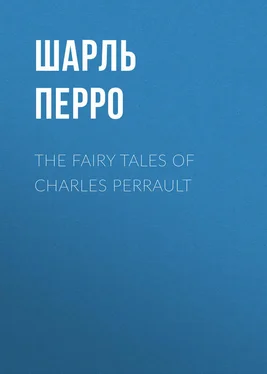
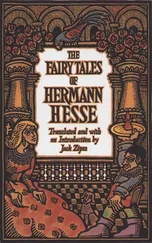
![Шарль Перро - Волшебные сказки Перро [Совр. орф.]](/books/400033/sharl-perro-volshebnye-skazki-perro-sovr-orf-thumb.webp)
